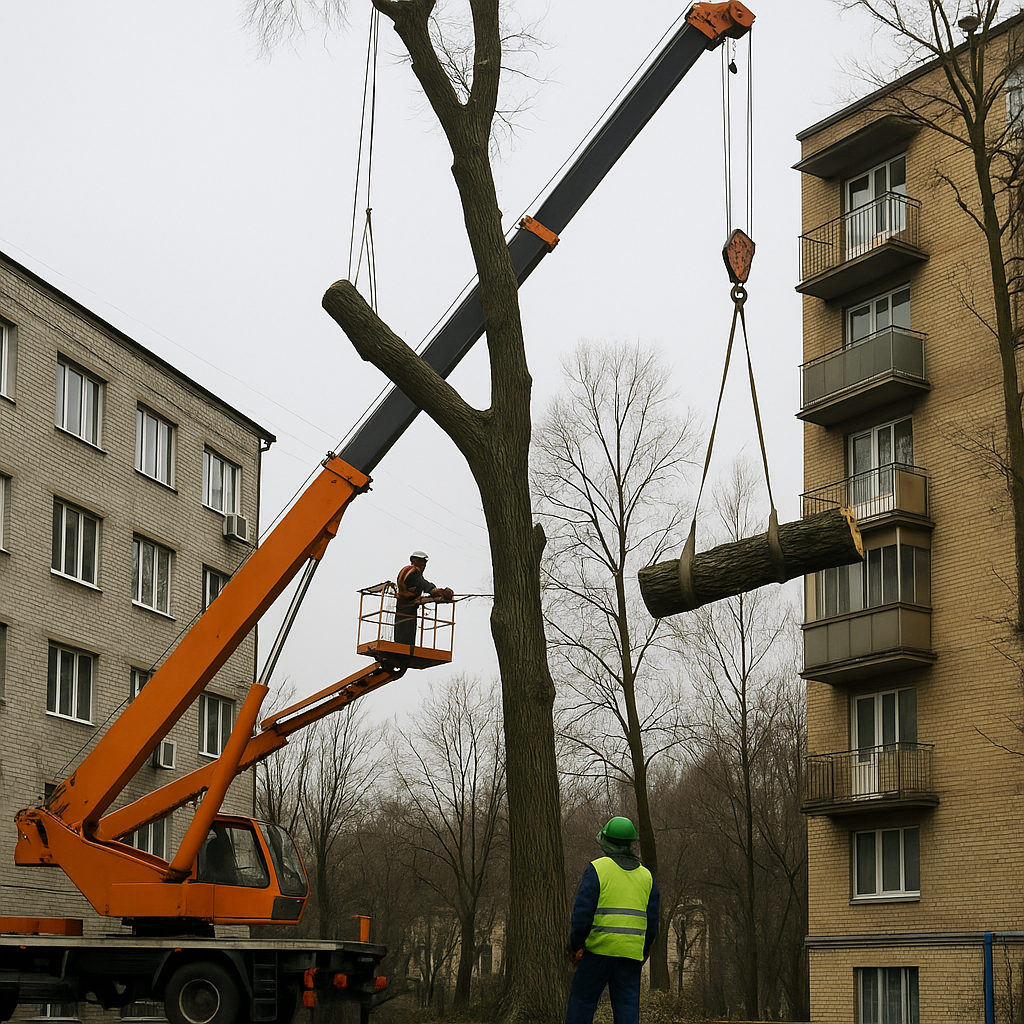Removing hazardous trees in dense urban areas: how to avoid damaging utilities

Removing hazardous trees in urban areas is a complex and multi-stage process that requires a professional approach and careful planning. Especially many challenges arise in dense development, where green spaces are often located in close proximity to residential buildings, shopping centers, parking lots, power lines, gas pipelines, and a dense network of underground utilities. To avoid problems, the work must be carried out according to a clear plan, using special techniques and equipment, and with the participation of qualified specialists who have experience working in confined urban spaces.
The main difficulties in removing trees in the city
Cutting down trees in dense urban areas has its own peculiarities and dangers. The main problems that arise most often are:
- limited space for falling or dismantling large branches and parts of the trunk;
- close proximity to residential buildings, trade pavilions, parking lots and pedestrian areas;
- the presence of underground utilities, including water pipes, communication cables, heating mains and gas pipelines;
- Possible obstacles in the form of balconies, power lines, signage, air conditioners, or lampposts.
Each object has its own characteristics, so standard methods of tree removal used in private sectors or open areas are often inapplicable in the city.
Stages of safe tree removal
To minimize risks and avoid damage to utilities, tree removal in dense buildings is carried out in stages:
- Inspection of the object Specialists conduct a technical inspection of the tree and the surrounding area. They determine the condition of the trunk, the slope of the crown, the presence of cracks, the direction of potential fall, the location of underground and above-ground utilities, and obstacles. If there are cables or pipes under the tree, a cutting method that eliminates vibration stress on the soil is selected.
- Approval of works If necessary, permits are obtained from city services, condominiums or management companies. A detailed safety plan is developed, and a restricted access zone for pedestrians and vehicles is defined. If necessary, temporary closure of sidewalks or driveways is organized.
- Use of specialized equipment and methods Preference is given to methods of phased dismantling:
- gradual removal of branches and crown, starting from the top;
- phased cutting of the trunk using industrial mountaineering, lifts or telescopic towers;
- controlled lowering of the cut parts using safety systems and cables to avoid falling on buildings or utility networks.
Special equipment is also used to minimize damage to lawns, paving slabs, and other landscaping elements.
How to avoid damage to utilities
Protecting utility networks is one of the main tasks when removing trees in the city. The following measures are used for this purpose
- preliminary scanning of the soil for underground cables, pipelines and heating mains;
- use of cable systems and blocks for controlled descent of branches and parts of the trunk instead of free fall;
- limiting the use of heavy machinery in areas where communications are located and using lightweight mobile units;
- use of hand tools and climbing techniques in critical areas where excessive ground pressure or vibrations are unacceptable.
Additionally, specialists install protective decks to prevent damage to sidewalks and lawns, and use soft pads under the cargo ropes to avoid abrasion of surfaces.
Why it is important to trust professionals
Cutting down hazardous trees in dense housing does not tolerate experiments and amateurism. Only qualified specialists are able to assess all risks, choose the best tactics and apply the right technical solutions. Teams of professional climbers use certified equipment, industrial safety systems, and have experience working in difficult conditions.
In addition, responsible contractors insure their work. This further protects the customer from possible losses and ensures full legal responsibility for the quality and safety of the work.
The right approach to tree removal is not only about taking care of the aesthetics of the space, but also about ensuring the safety of people, buildings, and critical city communications.
Interesting articles:
Welding at height for the restoration and repair of metal structures: techniques and methods
